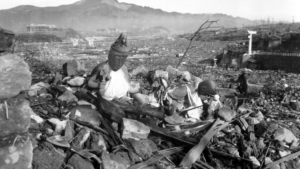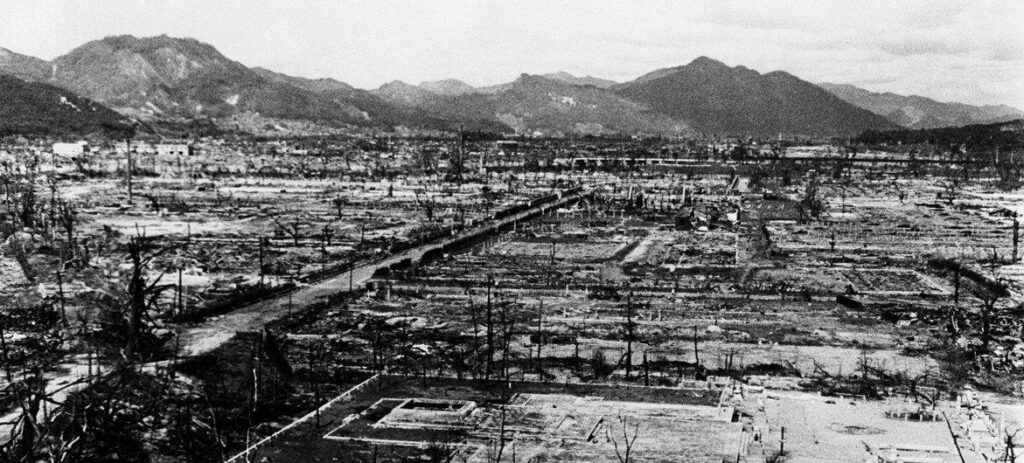Physical Address
23,24,25 & 26, 2nd Floor, Software Technology Park India, Opp: Garware Stadium,MIDC, Chikalthana, Aurangabad, Maharashtra – 431001 India
Physical Address
23,24,25 & 26, 2nd Floor, Software Technology Park India, Opp: Garware Stadium,MIDC, Chikalthana, Aurangabad, Maharashtra – 431001 India

Introduction
The hot topic on social media today is the discussion surrounding “Oppenheimer,” the film directed by Christopher Nolan. The movie “Oppenheimer” is about J. Robert Oppenheimer, an American theoretical physicist, and the development of the atomic bomb during World War II as part of the Manhattan Project. The film explores Oppenheimer’s role in leading the scientific effort that ultimately led to the creation of the world’s first nuclear weapons. It delves into the moral and ethical dilemmas the scientists involved in the project face and the far-reaching consequences of their actions. With Nolan’s signature storytelling style, “Oppenheimer” is expected to be a thought-provoking and visually captivating portrayal of one of the most significant events in human history.

J. Robert Oppenheimer was not directly involved in dropping the atomic bomb on Hiroshima. He was the scientific director of the Manhattan Project, a research and development project during World War II aimed at creating the first atomic bomb. The project successfully developed two types of atomic bombs: “Little Boy” and “Fat Man.” While Oppenheimer played a crucial role in developing the atomic bomb, including overseeing its successful test (code-named “Trinity”) in July 1945, he was not involved in the specific decision to use the bombs on Hiroshima and Nagasaki. The decision to drop the atomic bombs was made by the United States government and the military leadership, aiming to hasten the end of World War II and avoid a costly invasion of Japan.
This article’ll discuss nuclear blasts’ Environmental and Biological effects.
Effects of Atom Bomb Blast in Hiroshima and Nagasaki
The atomic bombings of Hiroshima and Nagasaki in 1945 resulted in an estimated 140,000 deaths in Hiroshima and 74,000 deaths in Nagasaki by the end of that year. Many survivors faced leukaemia, cancer, and other severe side effects from radiation exposure. The bombings caused extensive destruction, with around 70% of buildings razed and burnt in Hiroshima and a 6.7 sq km area levelled in Nagasaki. Medical aid was severely hindered, as most healthcare professionals were killed or injured, and hospitals were rendered non-functional. Survivors endured combined injuries, including severe burns, and many died without receiving any care. Even years later, the incidence of leukaemia and various cancers increased significantly among survivors, and pregnant women exposed to the bombings experienced higher rates of miscarriage and infant deaths, with their children at greater risk of disabilities and cancer. The long-term consequences of radiation exposure persist today, with survivors experiencing increased cancer rates throughout their lifespan, seven decades after the bombings. Link. Archived

Environmental effects
The explosions released massive amounts of energy, resulting in intense heat and fireballs that reached temperatures of thousands of degrees Celsius. This caused widespread fires and created massive updrafts, carrying debris, dust, and radioactive particles into the atmosphere. The intense heat and fires led to air pollution, releasing toxic gases and particulate matter. The radioactive fallout from the explosions also dispersed into the air, contaminating the atmosphere with radioactive isotopes. The bombings caused severe water contamination in both cities. The intense heat and fires from the explosions evaporated water sources, leaving many areas without access to clean water. The radioactive fallout that settled on water bodies, including rivers and lakes, contaminated them with harmful radioactive isotopes, making the water unsafe for consumption and agricultural use.
The explosions had a devastating impact on the soil in Hiroshima and Nagasaki. The intense heat and pressure from the blasts scorched and melted the earth, leaving a layer of radioactive ash and debris. The radioactive fallout settled on the ground, contaminating the soil with radioactive isotopes, particularly cesium-137 and strontium-90. These isotopes can persist in the soil for years, posing ongoing risks to human health and the environment. The radioactive contamination of air, water, and earth had long-term effects on the environment and ecosystem. Radioactive isotopes can be absorbed by plants and animals, entering the food chain and potentially affecting the health of those who consume contaminated food.

The radiation exposure also had genetic effects, impacting future generations of organisms. The bombings caused severe and lasting environmental damage, leading to long-term health issues for humans and disruptions to the natural ecosystem. Efforts have been made to mitigate some of the ecological consequences. Still, the legacy of the atomic bombings on the environment remains a poignant reminder of the devastating impact of nuclear warfare.
Has Nuclear weapons contributed to Climate Change?
Climate change and nuclear weapons pose grave artificial threats, endangering humanity’s survival, and their interconnectedness makes them ‘twin existential threats.’ A nuclear conflict would trigger climate disruption, leading to a nuclear winter with dire consequences for agriculture, causing global famine, potentially claiming 5 billion lives. Even a limited nuclear conflict could result in over 2 billion deaths. Nuclear winter wouldn’t reverse global warming but exacerbate some effects like ocean acidification and ozone layer damage, causing widespread harm to humans, animals, and plants due to increased UV radiation. The environmental consequences of nuclear weapons extend beyond explosions, with uranium mining, nuclear waste dumps, and testing contaminating the earth and sea, increasing risks alongside climate change. The production and testing of nuclear weapons have appalling environmental impacts, compounding catastrophe risks in a changing climate. Rising sea levels threaten nuclear waste storage sites, and environmental contamination from nuclear weapons facilities endangers future generations, with cleanup often neglected until the damage becomes irreversible.
The ramifications of nuclear war extend beyond humans, devastating wildlife, plants, and ecosystems. Climate change-induced stresses like food and water scarcity contribute to armed conflicts and forced displacement, amplifying global instability and raising the risk of nuclear war. Global warming is a pre-eminent security threat, making the world more vulnerable to dangerous situations. Uranium mining, waste disposal, and bomb testing contaminate the environment, leaving a lasting legacy of radiation. For instance, the Marshall Islands face rising sea levels threatening nuclear waste storage and endangering nearby communities and ecosystems if containment fails. Like oil and gas companies exacerbating the climate crisis, nuclear weapons facilities harm the environment, affecting future generations with radiation that persists beyond their lifetimes. Neglected waste cleanup disregards the environment and the health of future generations, causing insidious harm that is often forgotten until it’s too late. Combining climate change and nuclear weapons creates a perilous synergy, necessitating urgent action to address both threats and safeguard humanity’s future.
If you have any queries or come across suspicious content related to climate change or the environment and want us to verify them for you, then send them to us on our WhatsApp hotline: +917045366366